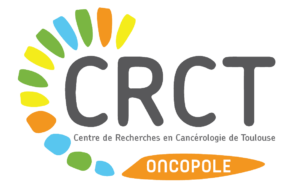In a study published in the journal Pediatric Blood cancer, the CRCT’s Team 14 “Individualisation of doses of anti-cancer drugs” led by Pr Etienne Chatelut, in collaboration with the Children’s Hospital of the Purpan University Hospital (Haemato-Oncology Unit, Paediatric Nephrology Unit, Radiopharmacy Unit), the Oncological Medical Biology Laboratory of the Claudius-Regaud Institute and the CRCT team 16 (Alteration of transcription factors in acute leukaemia) has shown that it is possible to determine the renal function of children precisely by carrying out a simple dosage, measuring the blood cystatin C level.
Cystatin C is a small protein we all have in our blood which is eliminated by our kidneys. Thanks to a mathematical equation integrating this cystatin C level, that of creatinine (another substance eliminated by the kidneys, which has been identified for a long time) and the child’s weight, it is possible to accurately estimate the renal glomerular filtration rate (GFR) of each child. This cystatin C and this equation allow for the monitoring of kidney function that is necessary when a child is treated with chemotherapy protocols that include potentially nephrotoxic anti-cancer drugs such as cisplatin and ifosfamide.
This study will be generalised to daily medical practice by simplifying the follow-up of children treated with potentially kidney toxic anti-cancer drugs. Until now, this follow-up required a relatively “heavy” examination for the child: injection of a product followed by several blood samples, an examination which is therefore only carried out at intervals. Based on our work, we are going to use the blood sample which is already regularly taken as part of the biological monitoring and the dosage of this marker, cystatin C, and thus be able to evaluate the renal functions of these children and make any necessary adjustments if there is any sign of renal suffering.
This work is likely to encourage the dosage of blood cystatin C in a greater number of Medical Analysis Laboratories. This would allow its use to be extended to other similar clinical situations in adults. In fact, we have shown in other studies that cystatin C makes it possible to better adapt the doses of an anti-cancer drug, carboplatin. [PMID: 31915969].
Discover the published article :
Pediatr Blood Cancer. 2020 Oct 15;e28747. doi: 10.1002/pbc.28747. Online ahead of print.
Plasma cystatin C is a marker of renal glomerular injury in children treated with cisplatin or fosfamide
Marie Lambert, Melanie White-Koning, Mathieu Alonso, Arnaud Garnier, Gwennaelle Alphonsa, Chloé Puiseux, Caroline Munzer, Joseph Berthier, Laurence Malard, Marlène Pasquet, Etienne Chatelut
Key words :
- Antitumour chemotherapy,
- renal toxicity,
- paediatrics,
- glomerular filtration rate,
- cystatin C
Contact :
Etienne Chatelut
Equipe 14 « Individualisation des doses de médicaments anticancéreux »
Mail : chatelut.etienne@iuct-oncopole.fr
One picture :
Correlation between actual glomerular filtration rate (EDTA clearance) and the value estimated by the equation based on blood cystatin C and creatinine and child’s weight
Special Mention :

The 111 Arts 111 Association provided funding for this study.


